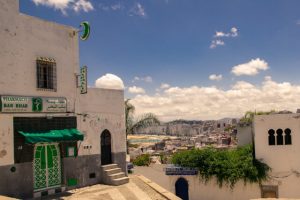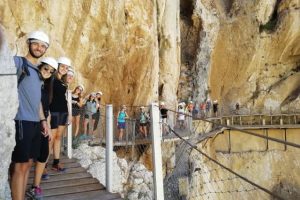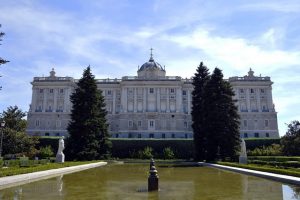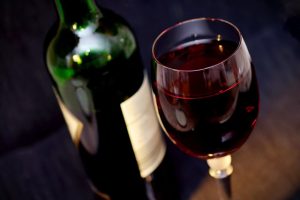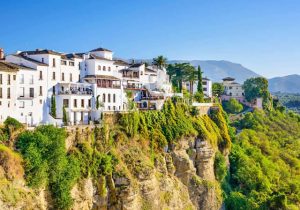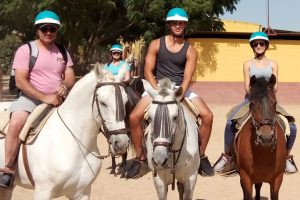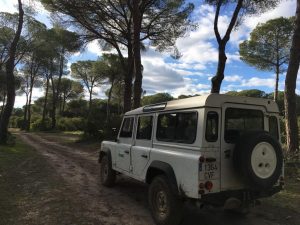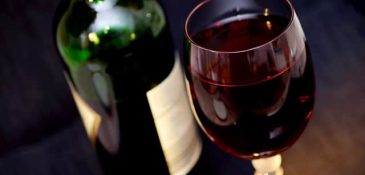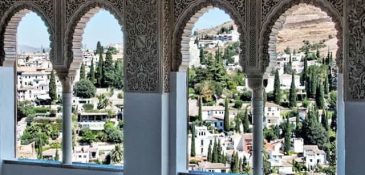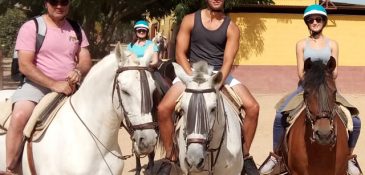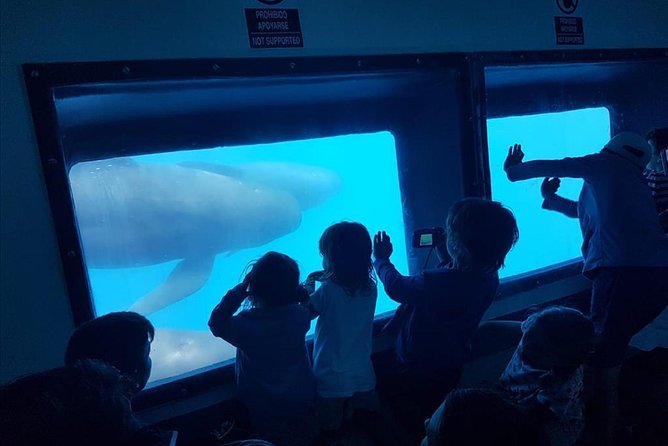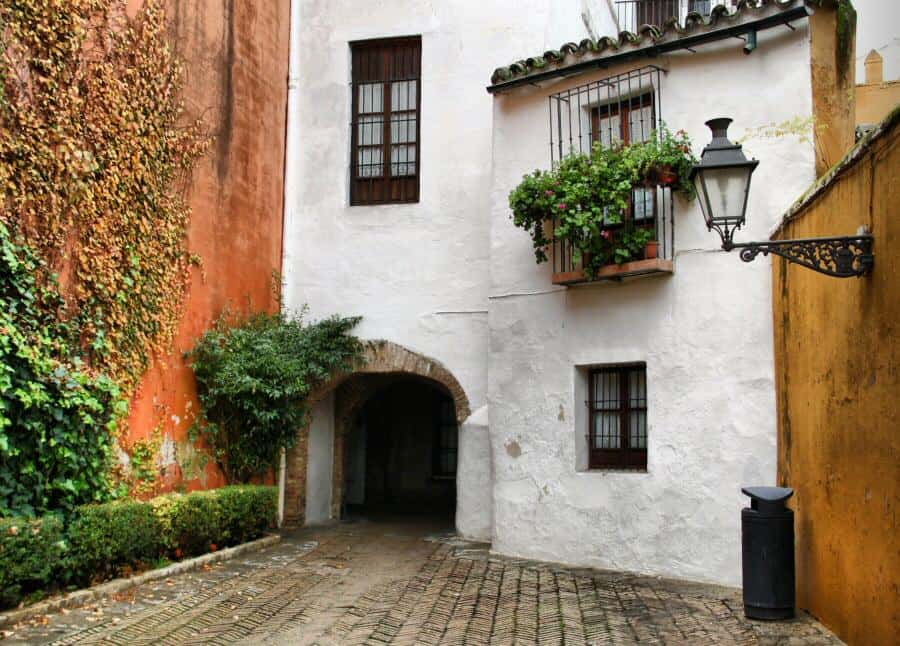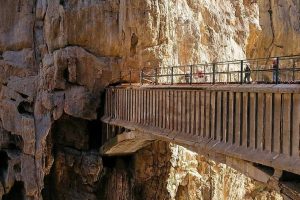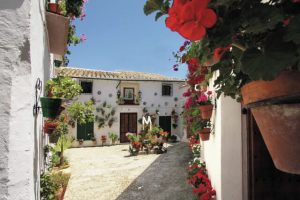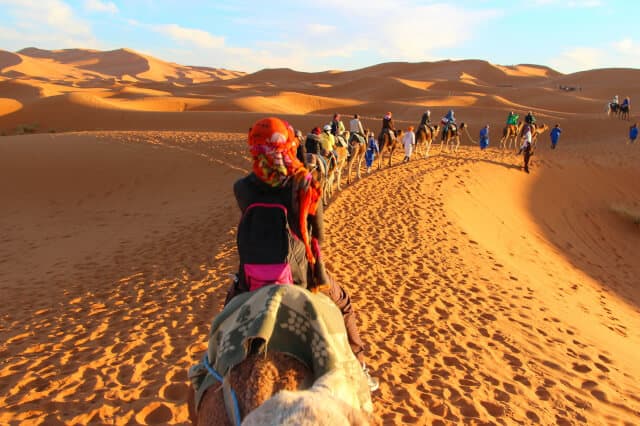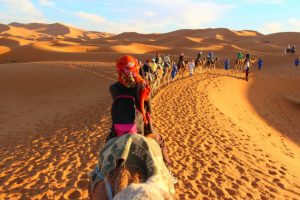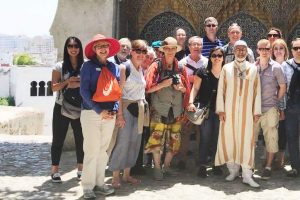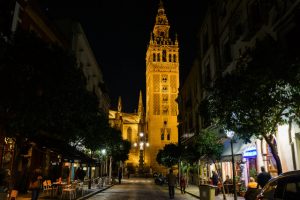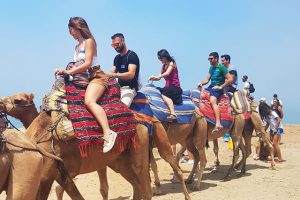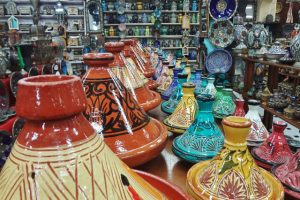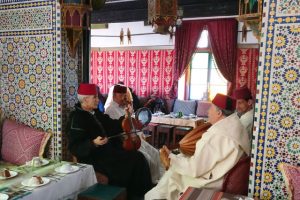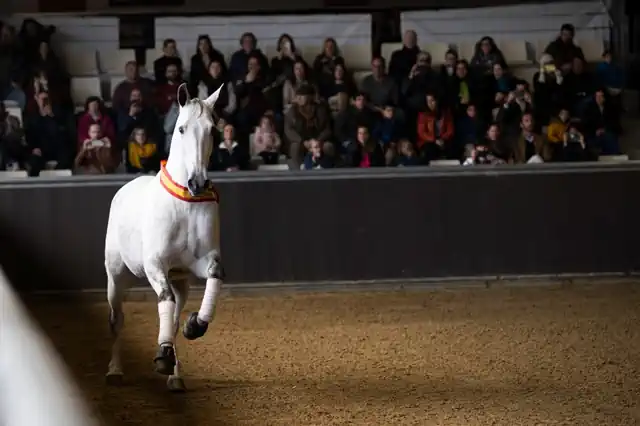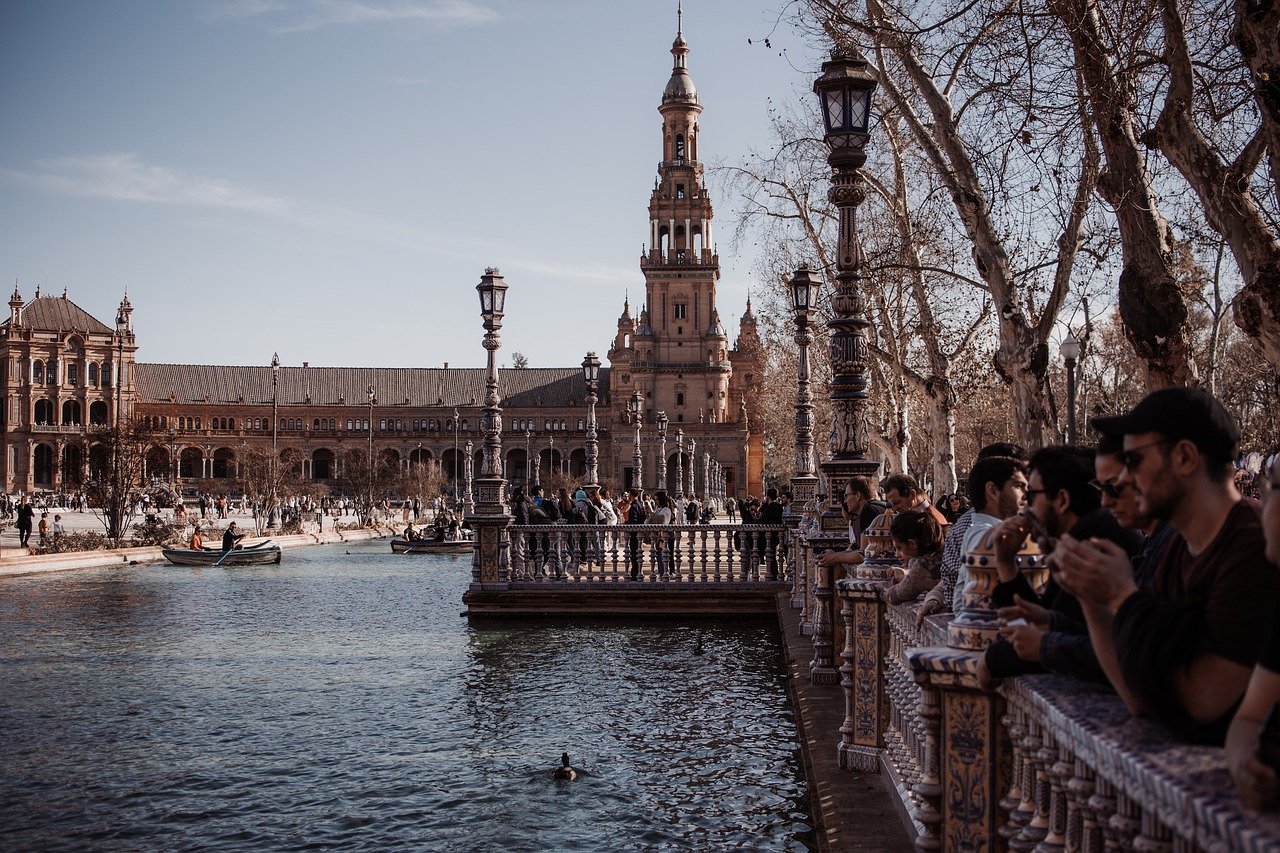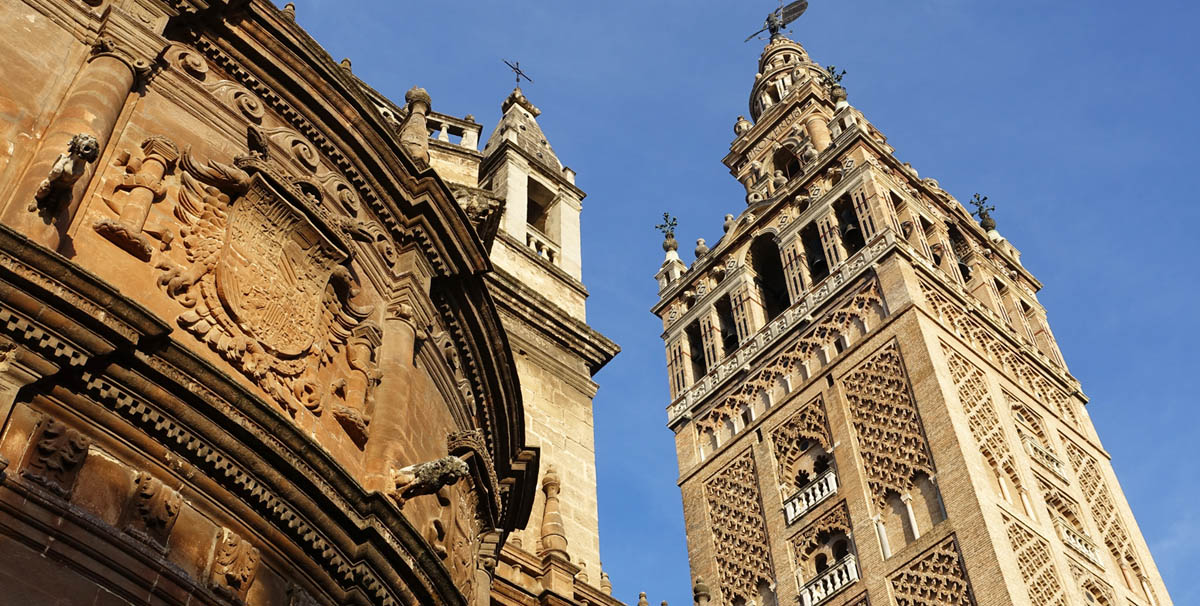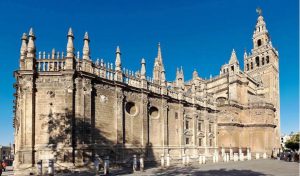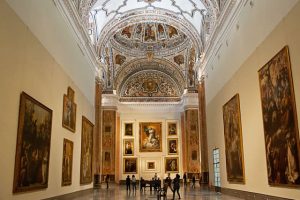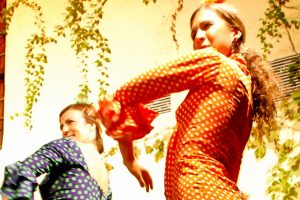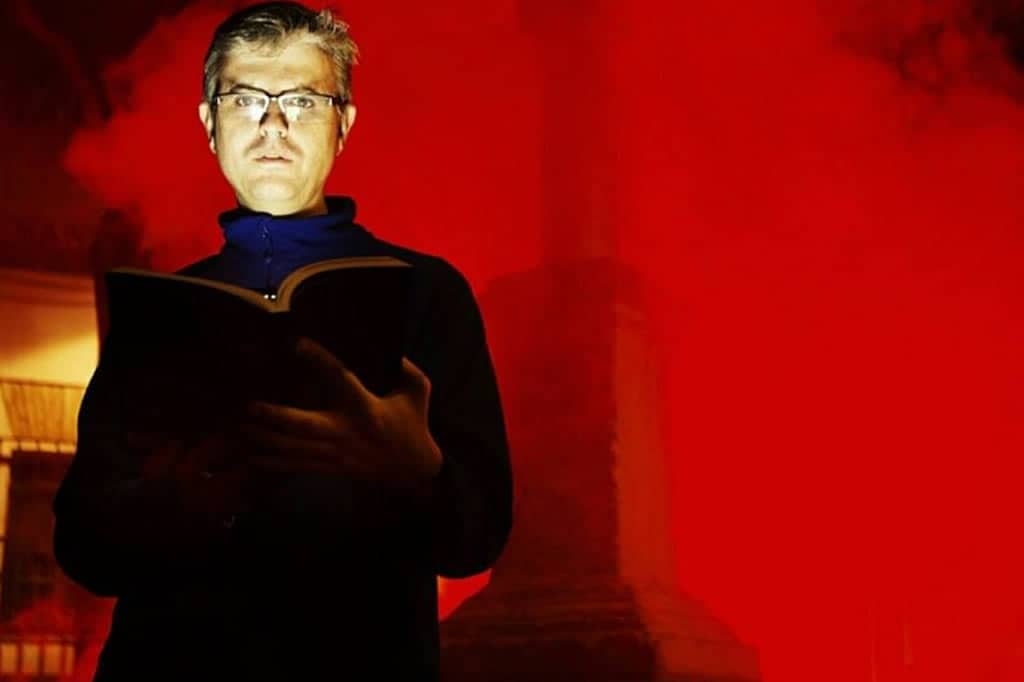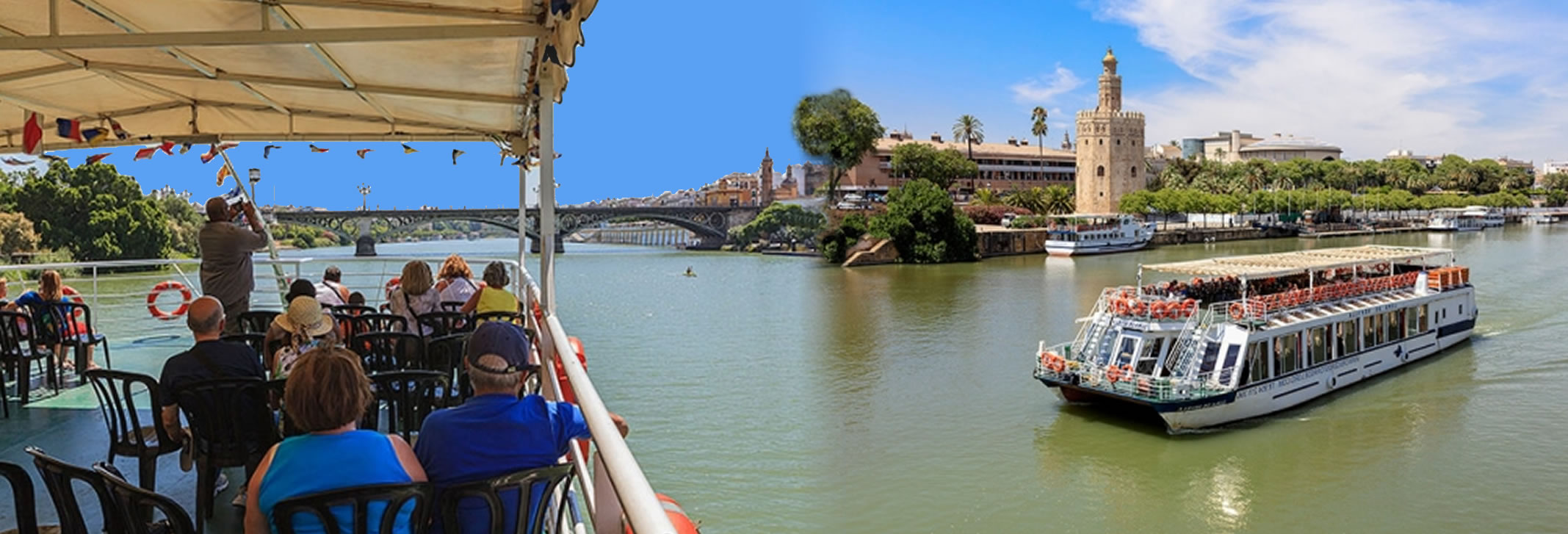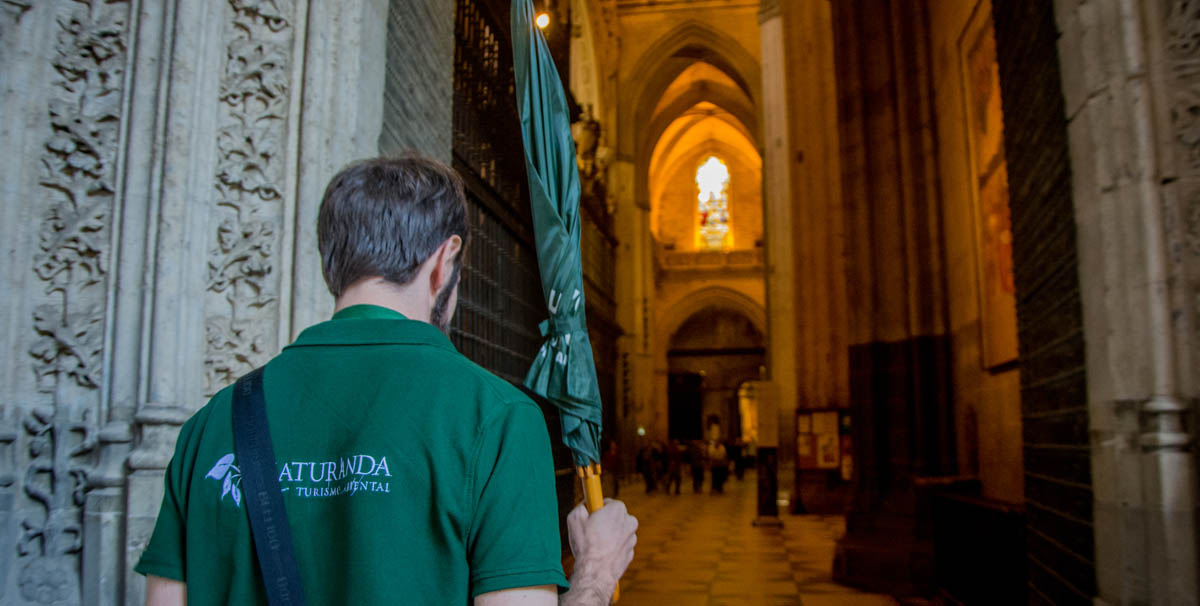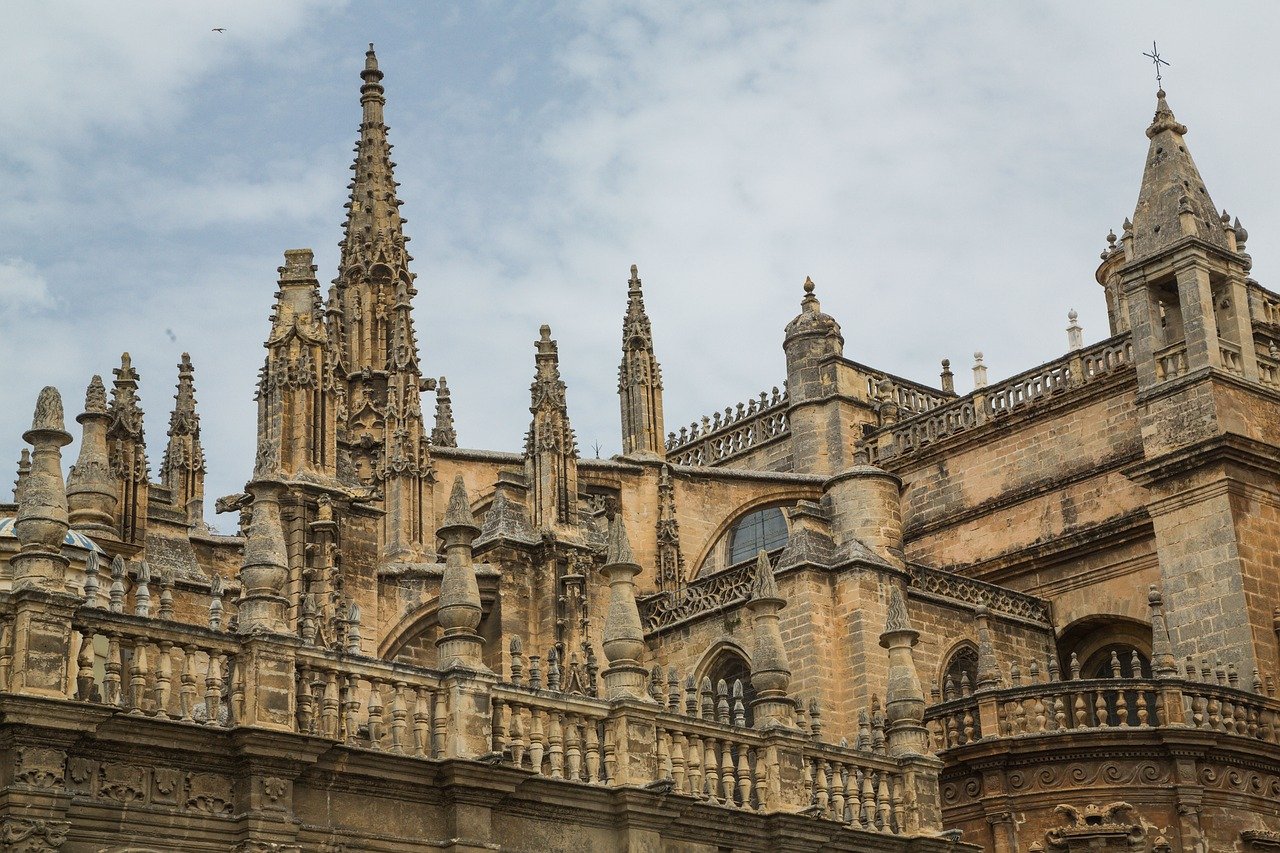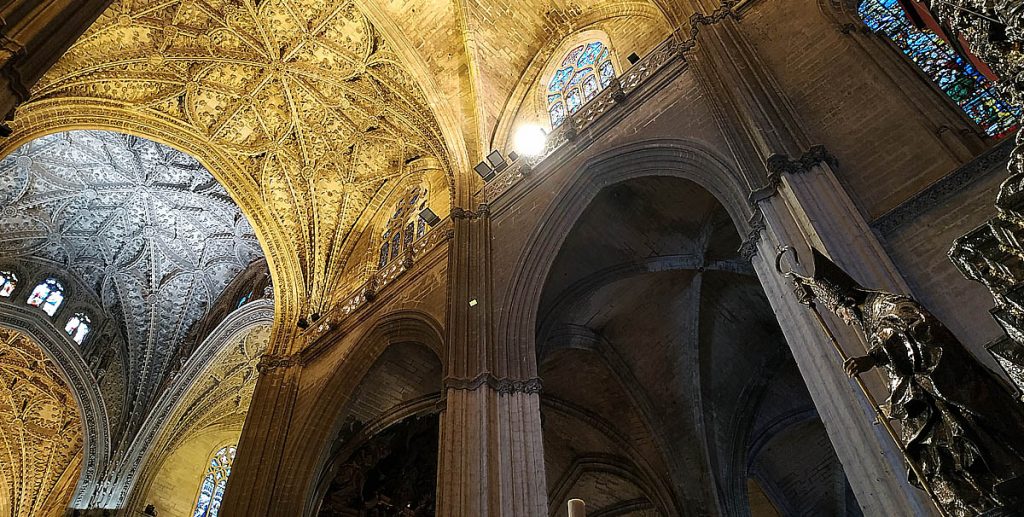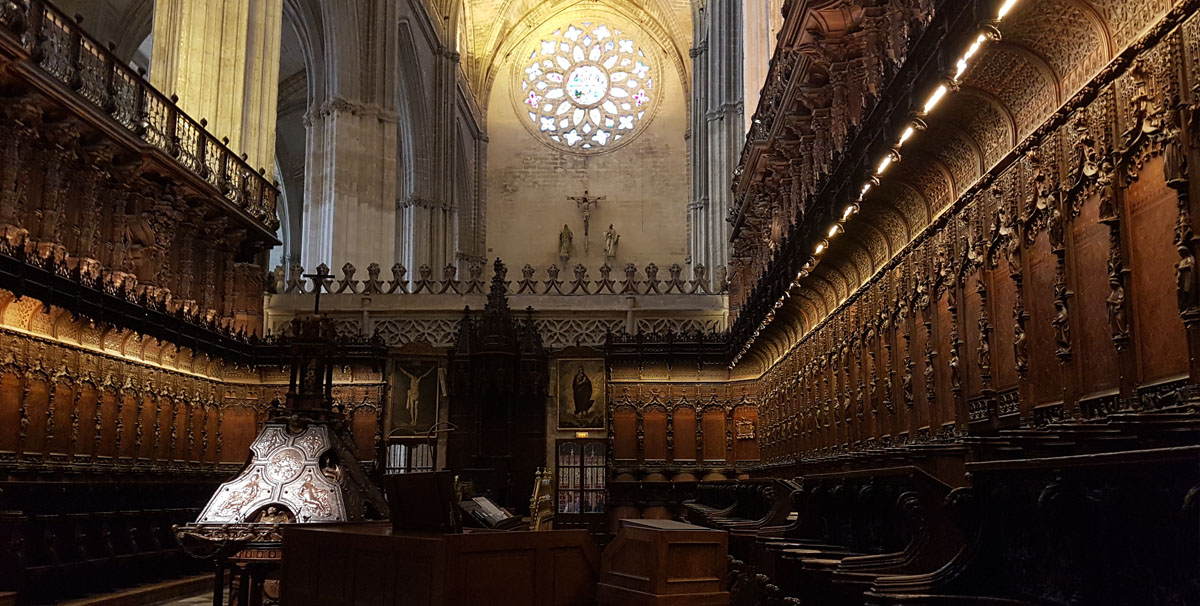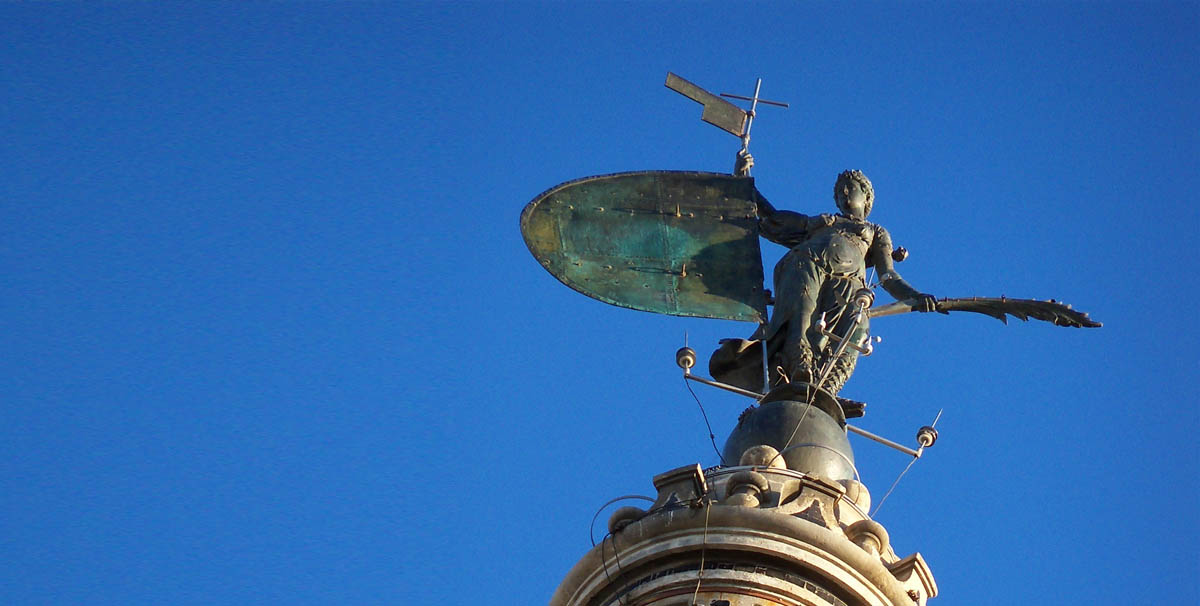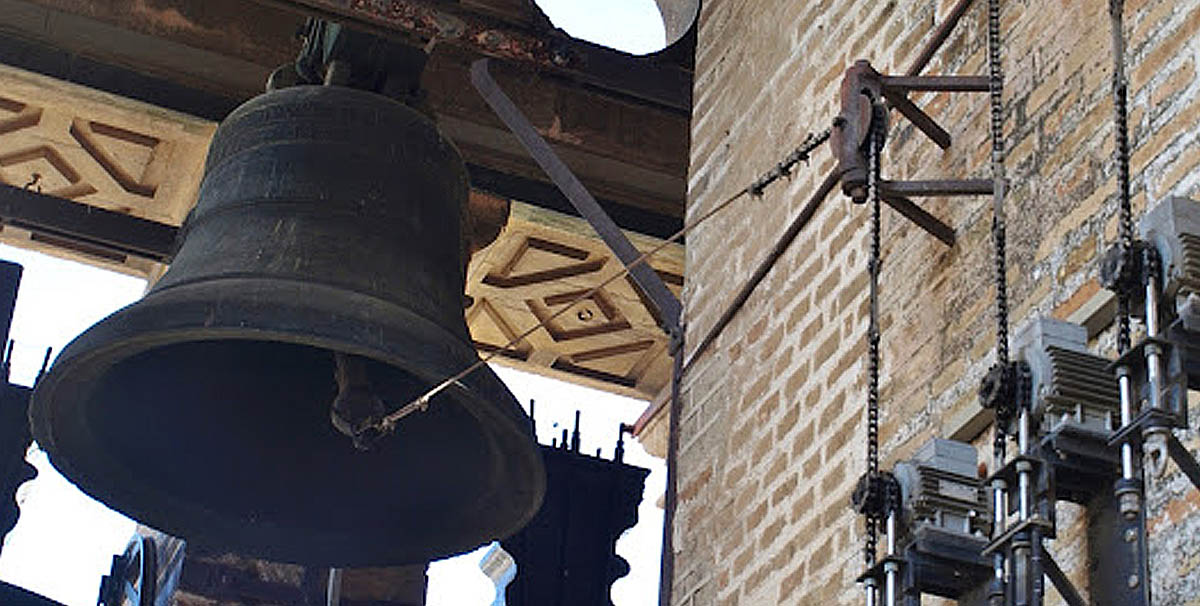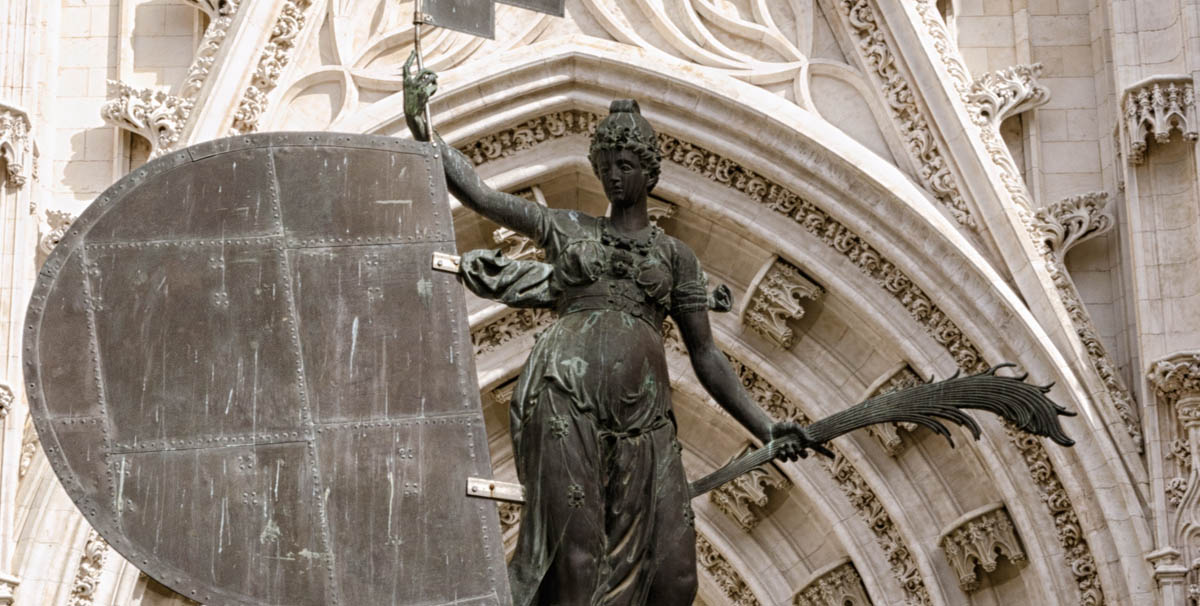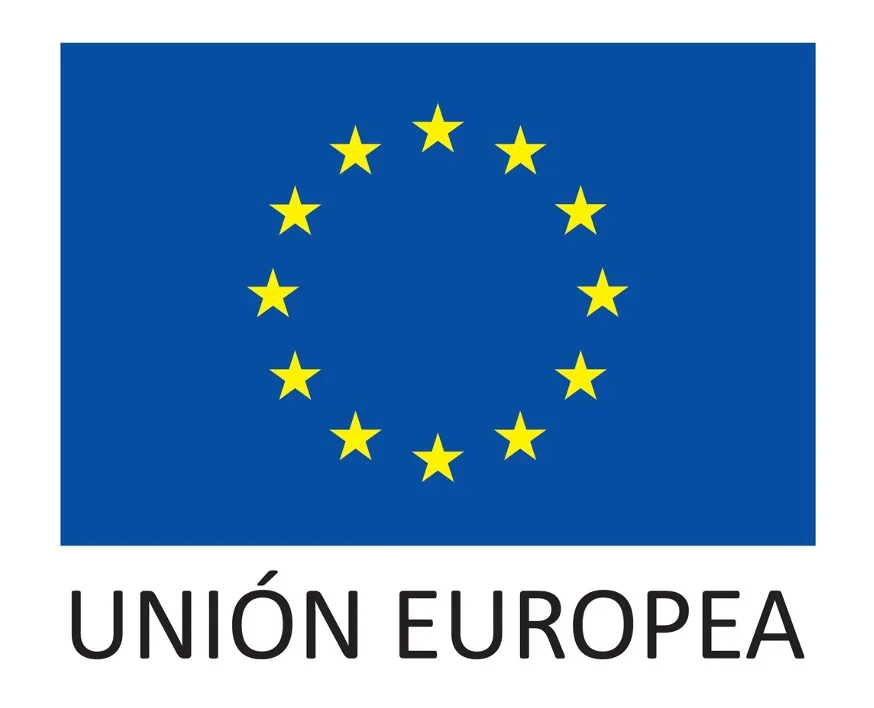If there is a place that stands out among all the places that we can see in the Cathedral, that is, without a doubt, the main altar, initially designed by Pedro Dancart , 20 meters high by 18 meters wide, divided into 7 vertical lanes, stands out the central double width, 4 bodies high, equipped with a bench in the lower part. Very rich ornamental work with 28 scenes from the life of Jesus Christ and the Virgin Mary.
But in the year 1550 the council decides that it must have two lateral streets on each side located at right angles attached to the initial set and this originated a new carving work of 16 new reliefs with scenes from the old and the new testament, being a total of 44.
Inside the Cathedral, the main altarpiece is very prominent in the central nave and in a marked Renaissance style, being highly valued within the History of Art. It was carried out in the year 1482 in which artists of the stature of Pedro Dancart, Jorge Fernández Alemán, Roque Balduque and Juan Bautista Vázquez el Viejo participated, who carried out the crucifixion of the Million, in the fifteenth century, and who, in the city, also among others, he made the image of Christ of Burgos. In this altarpiece there is an image of the Virgen de la Sede from the 13th century, who is the patron saint of the Cathedral.
The second phase began in 1550 and was completed in 1564 the work of Roque Balduque, Pedro Becerril, Juan de Villalba and Diego Velázquez, who was not the Sevillian painter although he shares the same name; it was added in 1552 Pedro Bernal, Juan Reclid and Luis del Águila in 1553, in 1554 Pedro de Heredia, Juan López, Andrés López del Castillo and in 1555 the sons of Andrés López del Castillo.
The magnificent Royal Chapel is the “head” of the Cathedral with a characteristic square floor plan with an apse and two side chapels. If we look up we will see the beautiful hemispherical dome and lantern from the period of 1567 and 1569, the work of Hernán Ruiz el Joven.
At this point we find the pantheon with the impressive silver urn of King San Fernando in an exceptional work by Juan Laureano de Pina in baroque style. We also find the tombs of Alfonso X of Castile and his mother, Queen Beatrix of Swabia. We also find the remains of Pedro I of Castile and his wife, Queen María de Padilla, presiding over everything is the ivory image of the Virgen de las Batallas, from the 13th century.
In the altarpiece we find the general patron saint of Seville, the Gothic image of the Virgen de los Reyes, at that time patron saint of the city and the archdiocese.
In the Trasaltar the religious sculptures, of saints, in fired clay, on the shelves and under canopies, are of enormous merit, there are 59 in a combination of styles such as Gothic, Renaissance and Mannerist, work of different stages and artists such as Miguel Perrin, Juan Marin or Diego de Pesquera.
Virgen del Reposo, from 1575, with her sleeping Child, possible authorship of Miguel Perrin in front of the gate of the Royal Chapel, many pregnant women entrust themselves to her so that the birth goes well.
There is a legend that tells us that centuries ago a Jew passed by his feet who blasphemed for being the Virgin the origin of Jesus, it is said that he converted to Christianity and repented of everything he said after which he dedicated himself to spreading the devotion to the Virgen del Reposo and the tradition with future women in labor. For all this she is known as Our Lady of Bienpariese.
Doña María Osorio had a great devotion to her and, for this reason, in 1554 she ordered the construction of a chapel or niche to Our Lady of Rest in the center of this entire area, known as the trasaltar, under it is the chapel of Our Lady of Soterraño .
Impressive is the Choir made with stone walls on three sides and which is located in the fourth and fifth vaults of the central nave and the front is closed with a Renaissance-style grille by Francisco de Salamanca in 1593.
The typical stalls of the Choir have 127 seats with marquetry backs in different types of wood that give the ensemble a particular color scheme. All the reliefs of scenes from the Old and New Testaments are very admirable in them. We can see from sweet expressions to hard, grotesque faces.
On the main planks at the entrance to the choir there are ogival motifs separated by columns topped with pinnacles, very much in the Gothic style.
We have three main positions that are those of the archbishop and his assistants in an exceptional artistic ensemble of carving, in one of them we can read: “This choir was made by Nufro Sánchez entallador… 1475”, as a trace of the passage of one of the craftsmen who worked on them as were master Pedro Dancart or his disciple Juan Alemán who completed the stalls in 1511.
In the Trascoro we find another incredible baroque work by Miguel de Zumárraga in 1619, it was concluded in 1635 after a decade of inactivity and very valuable marbles and jaspers were made, it also has the addition of ornaments, in bronze, reliefs and busts and a Gothic painting of the Virgen de los Remedios that presides over it with marked Italian trend in its invoice.
A jewel is its organ, famous worldwide and in operation with a great maintenance work by the conservators of the Cathedral of Seville. It is the authorship of Aquilino Amezua in 1901 and restored by Gerhard Grenzing in 1996. The previous one belonged to Jordi Bosch i Bernat, destroyed in the collapse of 1888, it was one of the best organs in Europe.
The secret of the organ is that it is not one but two and facing each other, they are two twin instruments that sound from the same keyboard simultaneously, as a curiosity to say that it has 15,000 pipes that give it unparalleled harmony.
There are four Alabaster Chapels, small and very unknown, from 1515, by the master Juan Gil de Hontañón and continued by the architect Diego de Riaño, these are the Chapel of the Immaculate, Chapel of the Incarnation, Chapel of the Virgin of the Star and Chapel of San Gregorio.
The Chapel of the Immaculate has an impressive altarpiece by Juan Martínez Montañés, commissioned by Jerónima Zamudio on February 14, 1628, the widow of the jury Francisco Gutiérrez de Molina. It is an Immaculate Conception , in its realization, and due to a lawsuit due to delays, it was when the famous image maker said: “it will be one of the first things in Spain and the best thing that the aforementioned has done”. The image of the Immaculate Conception presides over the altarpiece inaugurated on December 8, 1631. She is popularly known as La Cieguecita because her eyes seem almost half closed, almost closed.
Symbolically she is a Virgin Girl , 164 centimeters tall with a tunic that is very tight and gathered with a girdle that symbolizes that she is a maiden, highlighting the quality of the work of the mantle with multiple folds. On the head a crown with twelve stars in reference to the twelve tribes of Israel. At his feet, on the base, the faces of three angels on a dragon symbolizes sin. Capilla de la Encarnación has an imposing altarpiece by Francisco de Ocampo y Felguera from 1630 orbiting around The Annunciation, the images of San Juan Bautista, San Juan Evangelista, Santo Domingo, San Francisco and San Antonio draw attention.
In the Chapel of the Virgen de la Estrella we find a Renaissance image of the Virgin, possibly the work of the Gallic Renaissance sculptor Nicolás de León , from 1530; the baroque altarpiece is by Jerónimo Franco from 1695.
The Chapel of San Gregorio has an image of the saint carrying a book, as a curiosity to say that in it you can see the signature of its author Manuel García de Santiago from the 17th century.
In it Altar of Magdalena we find the patronage of Pedro García de Villadiego and his wife Catalina Rodríguez, from 1537, an anecdote that we find is that both appear represented in the altarpiece (much to the taste of the time), as well Don Pedro is next to San Benito and Doña Catalina next to San Francisco.
The motif it represents is The Annunciation in the attic and The Magdalene at the feet of the Risen Christ with paintings by an anonymous disciple of Alejo Fernández from 1537.
The stained glass window by Arnao de Flandes is exceptional, located next to the altar, where we can appreciate, in a colorful way, Saint Sebastian with the face of Emperor Carlos I. A new curiosity in the Cathedral is the duplicity of this altar, since there is another one on the north side of the transept nave of the Cathedral.
In the center of the altarpiece the relief with representation of the Assumption of the Virgin with paintings of San Ildefonso and San Diego de Alcalá. The patrons of the same are found in the banks, they are Juan Cristóbal de la Puebla and his wife who endowed it in 1593.
The Chapel of San Andrés stands out for the impressive carving of the Cristo de la Clemencia by Juan Martínez Montañés , in 1603, or Cristo de los Cálices, and a clear exponent of baroque sculpture, very serene and with the detail of having 4 nails fixing the crucified to the log.
We found the Gothic tombs of Alvar Pérez de Guzmán, his father, his wife, Elvira de Ayala and their son, as well as a painting of, presumably, Lucas Jordán from 1700 in which we can see “The transfer of the Ark of the Covenant” and “The Canticle of the prophetic Mary” in thanksgiving after crossing the Red Sea. In the upper area, there is a copy of the Martyrdom of Saint Andrew, by Juan de Roelas, and the original can be admired in the Seville Museum of Fine Arts.
There are many other points of interest inside the Cathedral but, finally, it could not be done in any other way than visiting the tomb of Christopher Columbus where his remains rest.
His last resting place is from the heights provided by four monumental pages that represent the four kingdoms of Spain that existed during the lifetime of Columbus, these are: Castilla, León, Aragón and Navarra.
The tomb was one of the last additions to the Cathedral, being located in 1899 under the design of the sculptor Arturo Mélida. Few know that, originally, it was located in Cuba , in Havana and was transferred to Seville after the loss of the colonies in 1898.
Columbus died in Valladolid in 1506 being transferred to Seville by order of his brother Diego. In 1542 his remains were transferred to Santo Domingo (Dominican Republic), in the Cathedral of Santa María , where they remained for 200 years to go to Cuba until 1898 when they returned to Seville.
The Cathedral of Seville is a monument that is visited by millions of people a year, in the historic center of the city and close to such emblematic places as the Barrio de Santa Cruz or monuments such as the Reales Alcázares or its inseparable Giralda. Contemplating everything it has to offer the visitor is a delight for the eyes and the soul, as could not be less in a temple of this category and significance. A must for every visitor.



